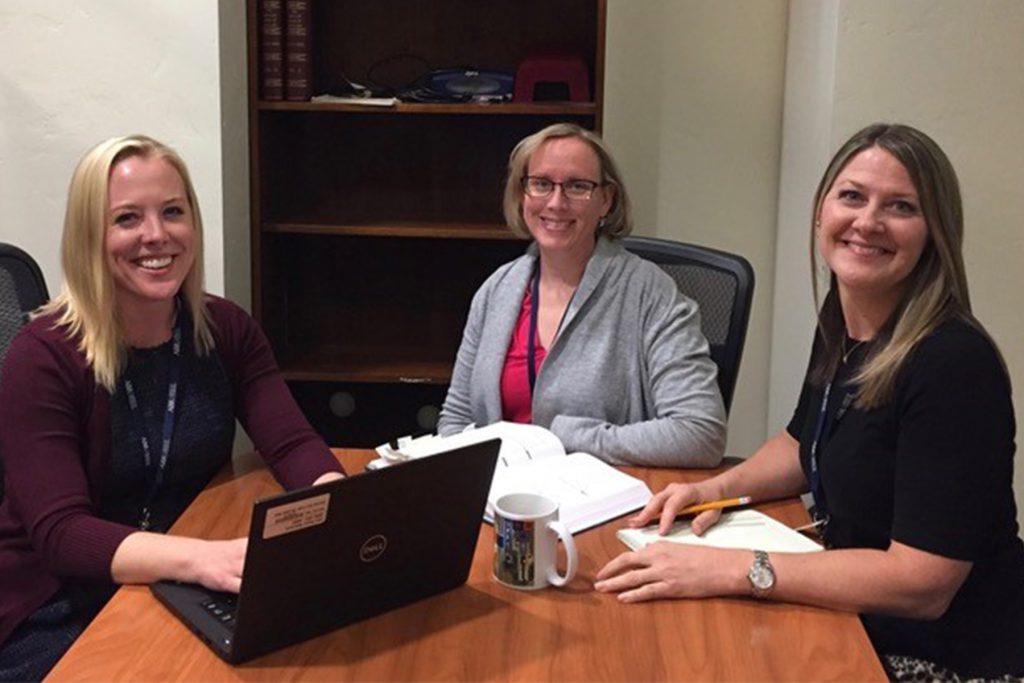
Although a small division in the exam services department, the editorial services team plays a big role in the creation of ABR exams. Three content editors help train volunteer item writers, edit all new and revised questions, and proofread every exam before it is administered. The editors combine their knowledge of writing and grammar with acquired expertise in medical and radiology-specific terminology, psychometric standards, and ABR style to make our written exams and Online Longitudinal Assessment (OLA) questions consistent, clear, fair, and accurate.
The editorial services team is led by Senior Content Editor Jenneen Lowry, who has been with the ABR for four and a half years. Kristi Jenkins joined the team almost three years ago, and Amy Chap was brought in to help with OLA content in the spring of 2018.
Lowry is the only editor who had previous medical editing experience, working for nonprofits and the pharmaceutical industry, but Chap and Jenkins have spent time writing and editing in other technical industries, including mining, disaster preparedness, and geotechnical engineering.
To competently edit items in all radiology disciplines, an editor must absorb a wealth of knowledge, which keeps the job interesting.
Chap said, “My knowledge increases daily about the many processes at the ABR as well as the content, yet I feel like there’s still so much to learn! I love that about my job.”
The goal of the editing services team is to create the highest quality exams possible. For Lowry, this means “reviewing the questions at every step in the exam creation process, working closely with volunteers to develop well-written questions, and keeping up-to-date with new developments in terminology.”
The editors work with subject matter experts to verify discrepancies in content and review each other’s work to ensure consistency in language and style.
Jenkins described the importance of the multiple-step review process, in which every item is reviewed by at least two different editors.
“It’s interesting to see how my colleagues approach different items,” she said. “If there’s a better way to express a question, they’ll find it, and my future work will be that much better for having learned from their example.”
The editing workload started to increase about a year before the launch of OLA for diagnostic radiology diplomates in January 2019. This high level of output continued as content was prepared for diplomates in interventional radiology, radiation oncology, and medical physics to enter the OLA process in January 2020. In 2019, the editing team processed more than 25,000 items.
In addition to hiring an additional editor, Lowry said, “This change in workload also led us to analyze and streamline our processes to make our work as efficient as possible.”
All the editors cite the camaraderie and team dynamics as being the best part of working at the ABR.
“I work with a wonderful team and am part of a very collaborative, supportive department,” Jenkins said.


